For the first time, scientists have an image of what happens inside an ant's brain when it is infected with a parasitic worm.
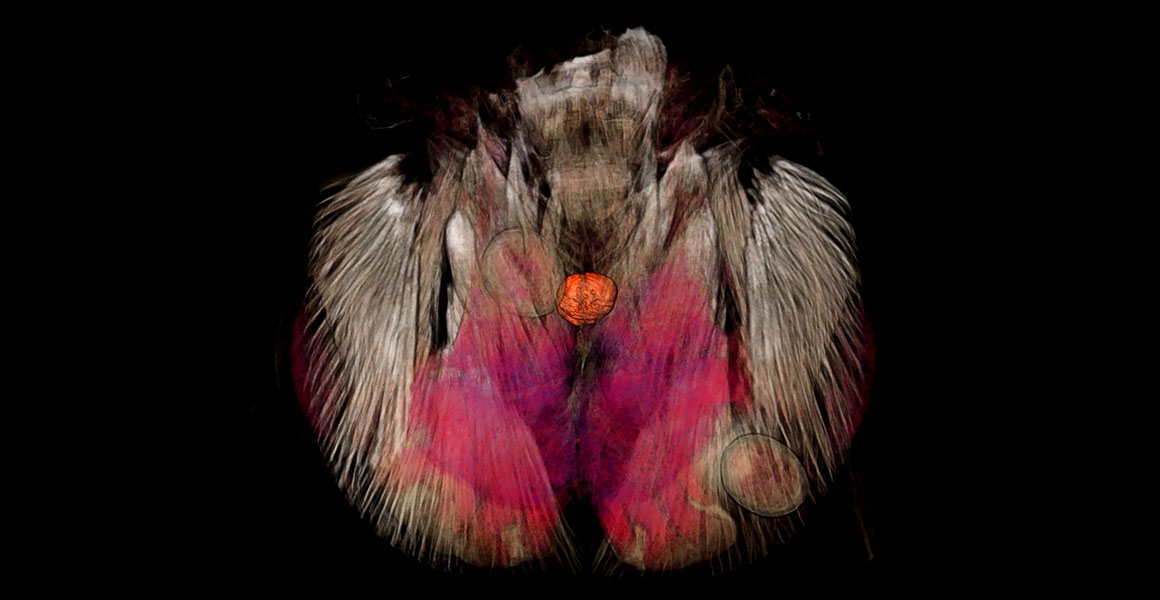
An artifically-coloured image of an ant head with three parasites embedded inside it. Two are outside the brain and one (the red one) is inside the brai. This was made using high-resolution scans from the Museum's Imaging and Analysis Centre.
Dicrocoelium dendriticum (or the lancet liver fluke) is a parasitic flatworm.
During the course of its remarkable life cycle it inhabits snails, ants and herbivorous mammals such as cattle. And although it is miniscule, it is capable of mind control.
Museum scientists have been studying how it interacts with one of its host's brains, and have captured the relationship on camera for the first time.
The results have been published in the journal Scientific Reports.
Life inside an ant
The lancet liver fluke starts life like many other parasites: as an egg living in the dung of sheep and cattle. That waste is eaten by a snail, which becomes the parasite's first host. The egg lodges inside the snail's gut, where larvae hatch and develop.
The parasite is eventually ejected in the snail's slime ball, which is in turn eaten by an ant. This is the parasite's second host, and the one in which things take a weird turn.
One of the flatworms lodges itself inside the ant's brain and effectively takes over, controlling the helpless ant's behaviour. The rest of the parasitic individuals wait in the ant's abdomen.
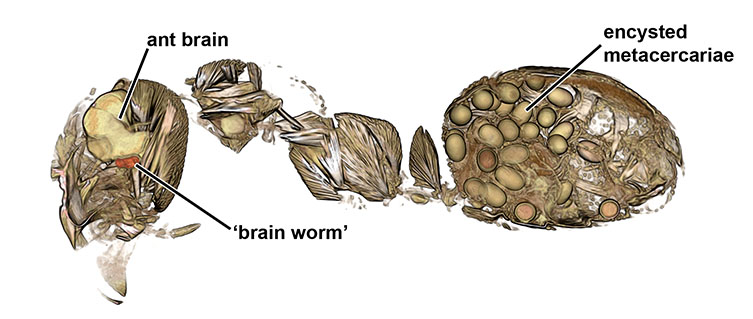
This is a 3D volume rendering of an infected ant. It has been artifically coloured to make the parasitic worm easier to see.Images licensed under a Creative Commons Attribution 4.0 International license.
The mind control extends to leading the ant directly into harm's way. At dusk, the ant will be compelled to walk to the top of blades of grass or other vegetation and lock their jaws to it. In this position, they are most likely to be eaten by herbivores in the early morning.
This will happen every night until the ant is eaten by a host in which the parasite can fully mature. Adult liver flukes reproduce inside the animal's bile duct and eggs are excreted out with the dung, starting the whole process again.
Co-author of the paper Dr Martin Hall says, 'This is an extraordinary lifecycle, and a classic example of a parasite manipulating a host to its own advantage. This kind of behaviour has fascinated biologists for years.
'However, the mechanisms that parasites use to manipulate the ants' behaviour are unknown – partly because until now we haven't been able to see the physical relationship between the parasite and the ant's brain.'
A look into the brain
For the first time, Museum scientists have an image of what is happening when the flatworm lodges in the ant's brain.
It is a picture of the specific region where the neurons responsible for the mandibular closure muscles are found. These muscles are the ones which the ants use to clamp on to grass.
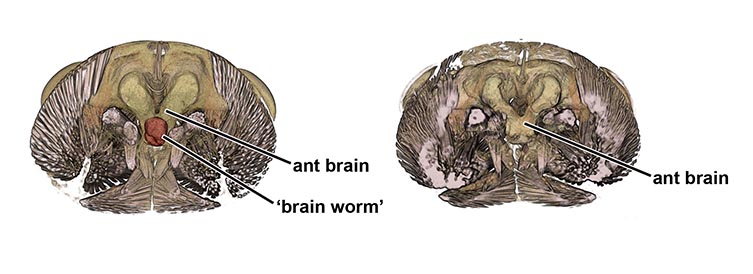
Micro-CT scans of the head of an infected ant (left) and an uninfected ant (right). Images licensed under a Creative Commons Attribution 4.0 International license.
Getting the image hasn't been easy, because the ants have hard heads and fragile brain tissue. Scientists used the Museum's Imaging and Analysis Centre to scan the ant's decapitated heads and bodies using a micro-CT scanner.
The scanner is capable of 'dissecting' an ant's brain in a non-invasive way, allowing scientists to see inside the brain from various angles. Up until now, other traditional examination techniques couldn't show this, hindering scientists' understanding of how the parasite manipulates the behaviour of the ant.
The ants were collected from a site in Alberta in Canada, stored in vials of ethanol, and shipped to the Museum for study.
Dr Daniel Martín-Vega, a Scientific Associate at the Museum who led the CT scanning study, says, 'Modern imaging tools can revolutionise our understanding of key processes that happen when a parasite meets a host.
'We could see the infestation in the brain for the first time, and confirmed that there could be up to three brain worms in one ant.
'There have been previous reports of more than one parasite lodged in the brain. This study shows that in the case of multiple infections, only one of them actually makes contact with the brain tissue.'
The images also show that a sucker is needed to actively manipulate the ant.
Dr Martín-Vega adds, 'This study shows the potential of micro-CT scanning in parasitology. It could be very useful for both research and education, as it gives the opportunity to directly visualise a parasite and its interaction with the tissues of the host.'
More information
- Read the scientific paper in the journal Scientific Reports.
- Find out more about the Museum's Imaging and Anlysis Centre.
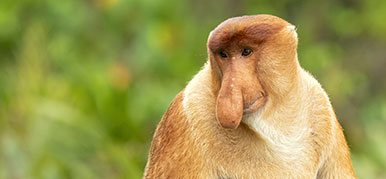
What on Earth?
Just how weird can the natural world be?
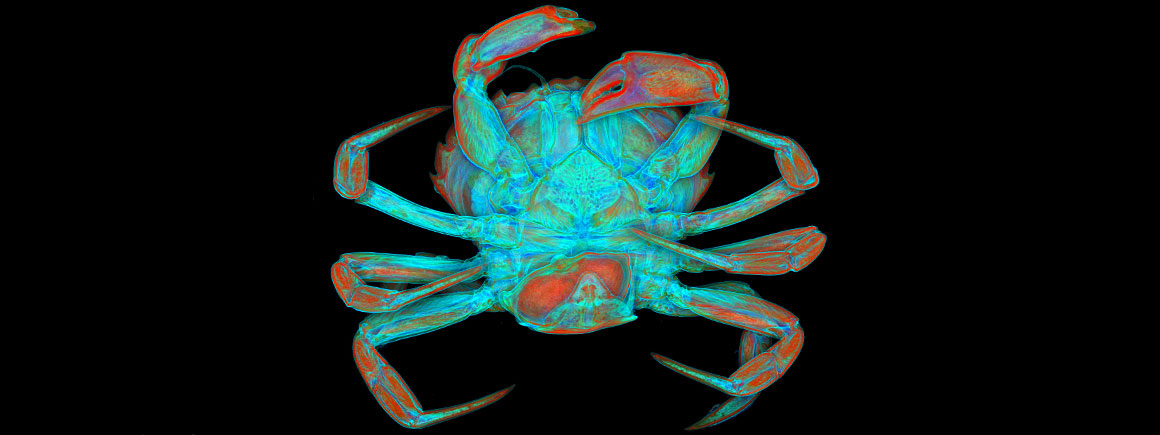
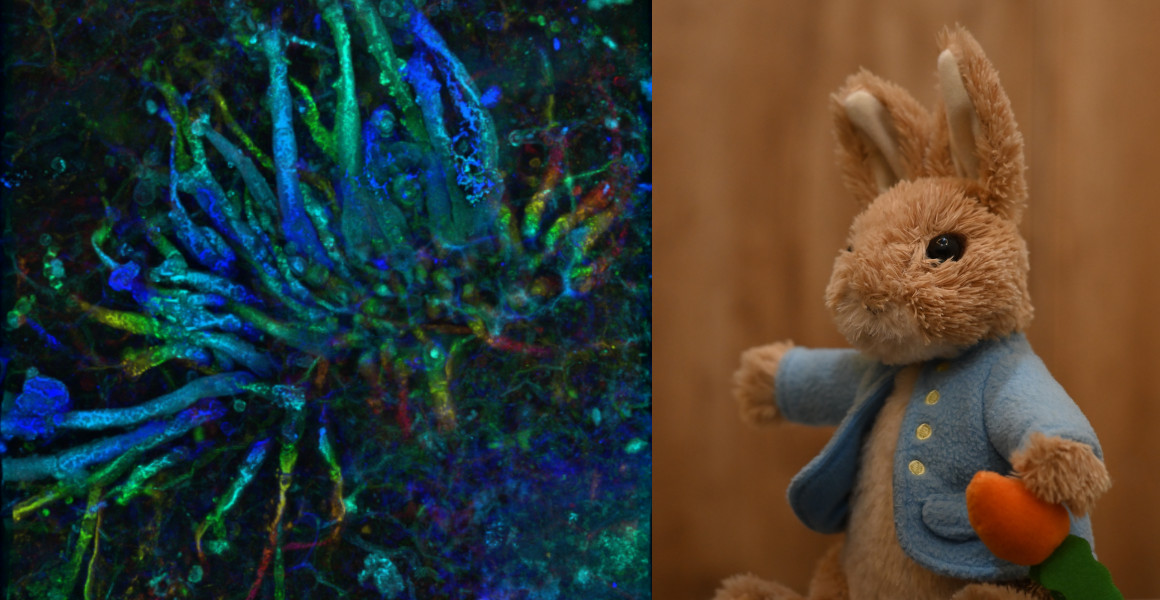

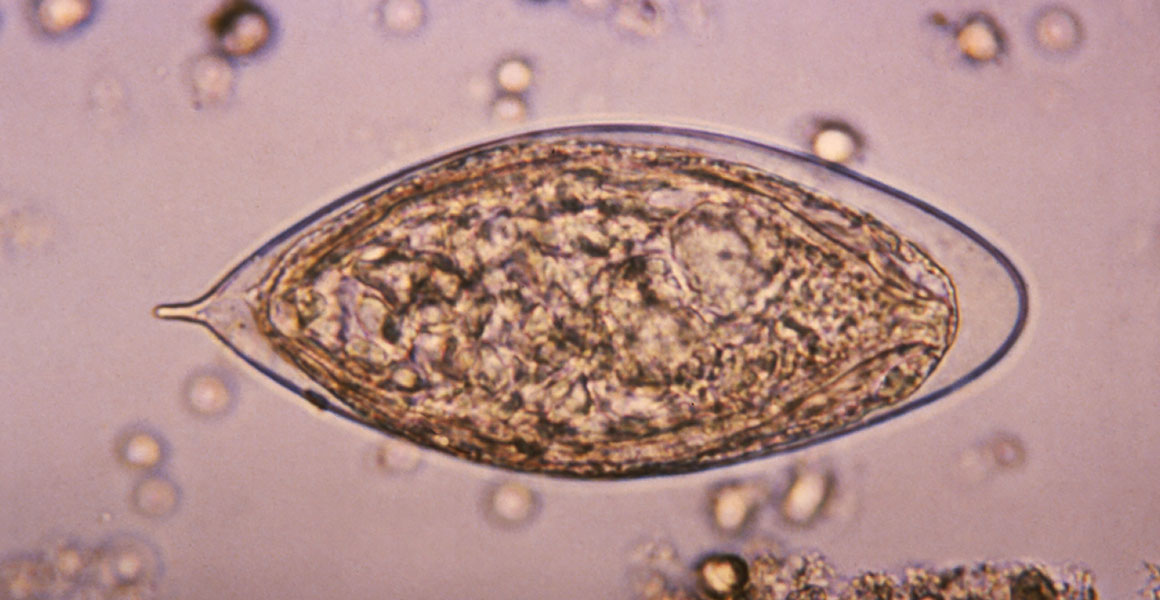
Don't miss a thing
Receive email updates about our news, science, exhibitions, events, products, services and fundraising activities. We may occasionally include third-party content from our corporate partners and other museums. We will not share your personal details with these third parties. You must be over the age of 13. Privacy notice.
Follow us on social media